Have you ever felt your anxiety levels rising as you approach your dog with a pair of clippers, knowing that trimming their dark nails can be a nerve-wracking experience for both of you?
Well, worry no more, as mastering the art of safely trimming your dog's dark nails is not only achievable but can also be done easily at home, so you don't go broke after you pay the hefty fee at the groomer.
In this article, we'll delve into the essential techniques and tips to make this task easier and stress free for both you and your canine companion.
So, sit back as we guide you on how to deal with dark nails and provide an ultimate solution to all your dog's grooming needs.
What Does it Mean When Your Dog's Nails Are Black?

Some are black; some are white or light-coloured. This is because of genes. Genes decide how much melanin, a pigment that colors the nail tissue. Black nails have a lot of melanin, making them dark.
Melanin also protects against sun rays. White or light-coloured nails have less melanin, so they look lighter. But even light nails have some melanin. Knowing this helps when trimming nails, especially black ones, as it's hard to see the sensitive part, called the quick.
How to Spot the Quick in Dark Dog Nails?
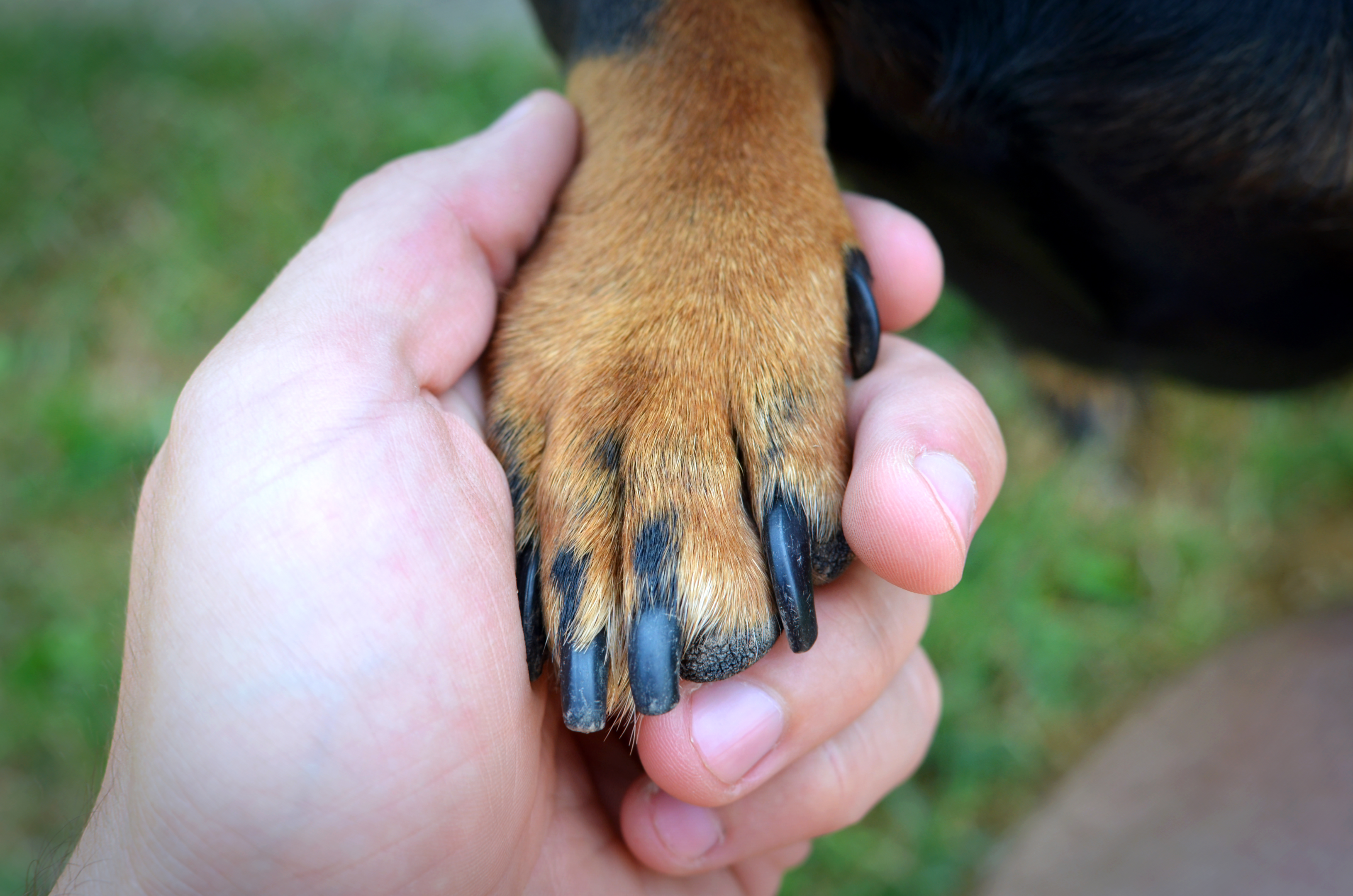
Before you start trimming your dogs nails, it's crucial to understand the quick and how to identify it. In white dog nails, the quick is easy to spot because it's red or pink.
However, in black dog nails, it's hidden, making it challenging to know where it is. That's why, especially if you're new to trimming, it's better to go slow instead of cutting too much at once.
Your dog's nail has two main parts: the hard outer shell (the nail itself) and the quick, which is an inner part containing blood vessels and nerve endings.
Cutting the outer shell doesn't hurt because there are no nerves, but cutting the quick can cause pain and bleeding due to the blood vessels. Learning to avoid the quick is essential for both you and your dog's comfort and safety when trimming black nails. While the quick in black nails is grey and not red, you can still see it if you pay close attention.
How to Cut Black Dog Nails?
Here is how you can cut black dog nails.
-
Spot the quick
Trimming dark nails on dogs can be trickier compared to trimming light-colored dog nails. By checking the underside of the nail, you can locate the light fleshy section of the nail known as the quick, which has the nerves and blood vessels.
It's important to trim above this point to prevent any pain or discomfort for your dog.
-
Be prepared

Gather the necessary tools for nail clipping, including sharp nail trimmers; they can be guillotine or scissor-style trimmers.
However, remember to regularly replace guillotine-style blades to maintain sharpness and prevent painful nail splitting. Moreover, keep the styptic powder or corn starch handy in case you accidentally trim a nail too far and nick the quick.
Ensure you have plenty of dog treats to help distract and reward your pup, promoting a positive experience.
Also, if you notice that your dog is extremely nervous or fearful, consider postponing the nail-clipping session. Take time to counter-condition or desensitize your dog to the process of nail trimming. You can also grind your dog's nails instead of trimming them.
Picking between a dog nail grinder and vs clipper is challenging. Make sure you pick the one that suits you and your dog.
-
Get help
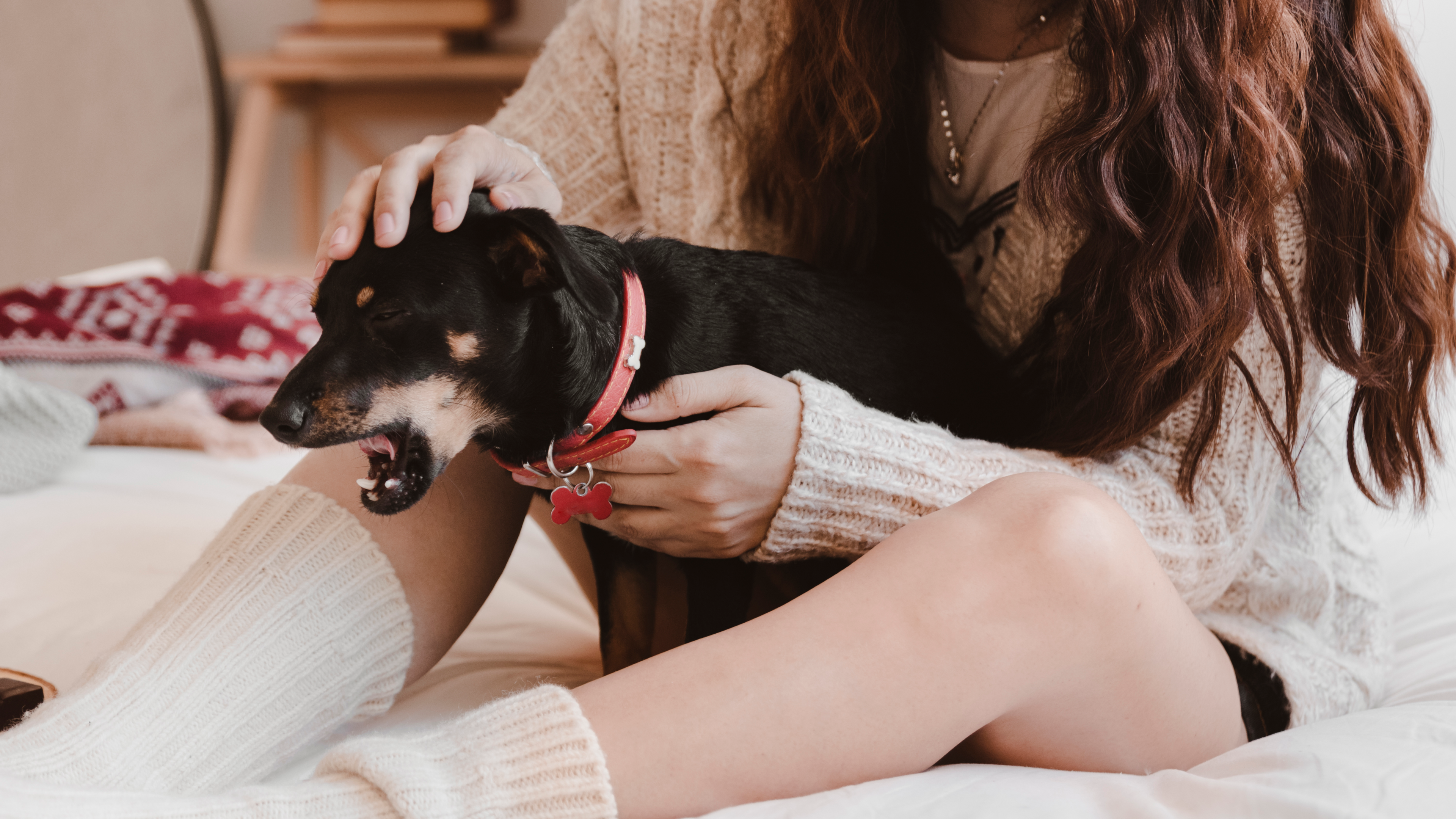
Ask a family member or friend who is comfortable with your dog to help you. Trimming nails is more manageable with two people, especially if your pup has thick nails.
One person can gently restrain the dog and provide treats for encouragement while the other person handles the nail clipping.
-
Hold the paw securely

Securely hold the paws but do not apply pressure firmly, allowing your pup time to adjust and get comfortable.
Be prepared to gently reposition the paw as needed throughout the process to keep the cut surface clear. Regardless of your familiarity with the dog, it's important to keep your face at a safe distance during nail trimming for safety purposes.
-
Get snipping
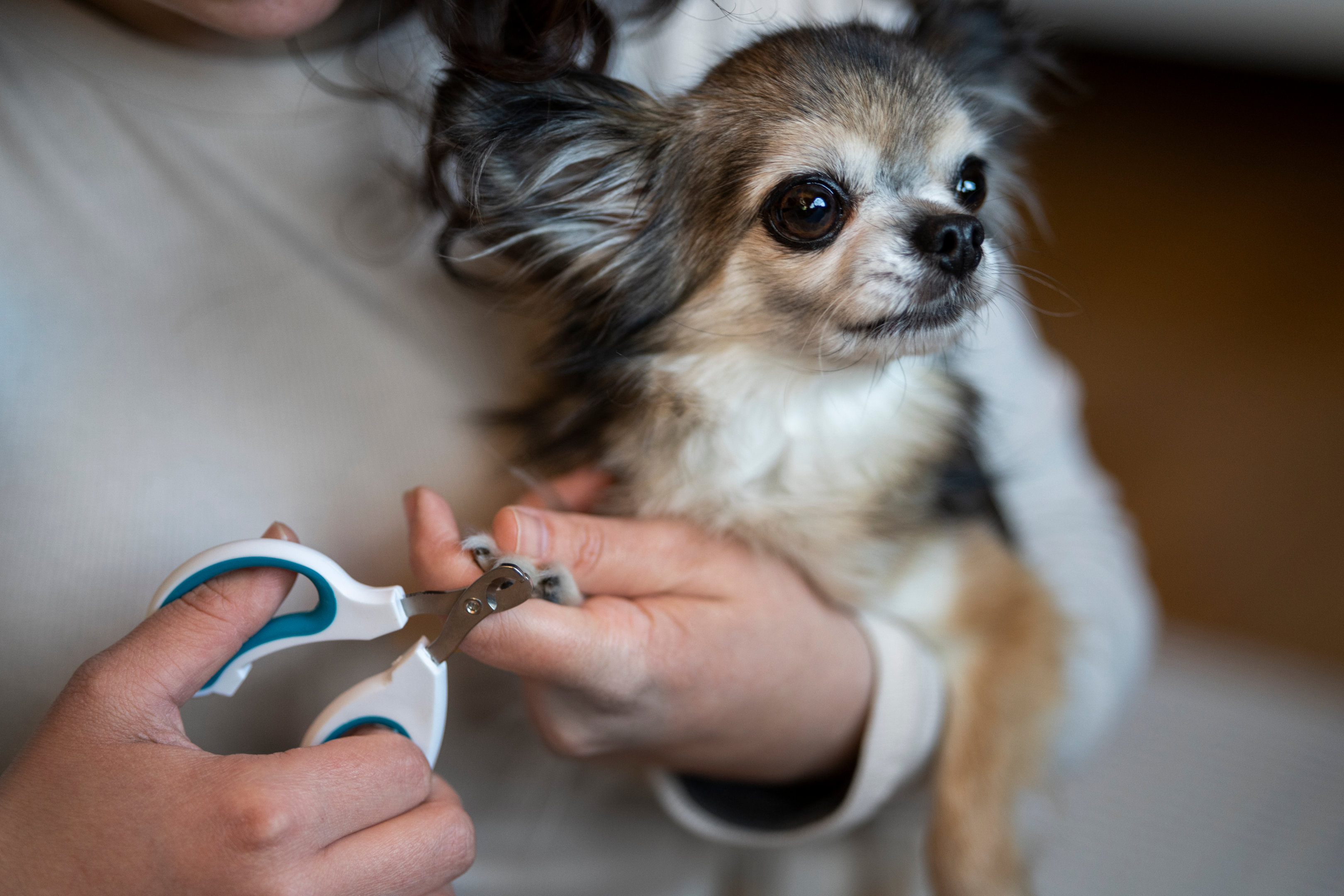
Start by cutting little bits from the nail; make sure not to snip off big chunks to avoid nicking them quickly. Look at the nail after each cut until you see a shiny dot or a dark circle. That's the dog's quick.
Stop cutting when you reach that point to avoid hurting your dog.
-
Positive reinforcement

It's a good idea to take short breaks throughout the nail-trimming process for both you and your pup to avoid getting frustrated. This allows everyone to relax.
Providing lots of encouragement, praise, and treats during and after the nail trimming session helps maintain a positive experience for your dog.
Positive reinforcement can help your pup associate nail trimming with good things, making future sessions easier. Remember to offer praise and rewards for calm behavior reinforcing the idea that nail trimming is nothing to fear.
Think Alternatives - Grinding
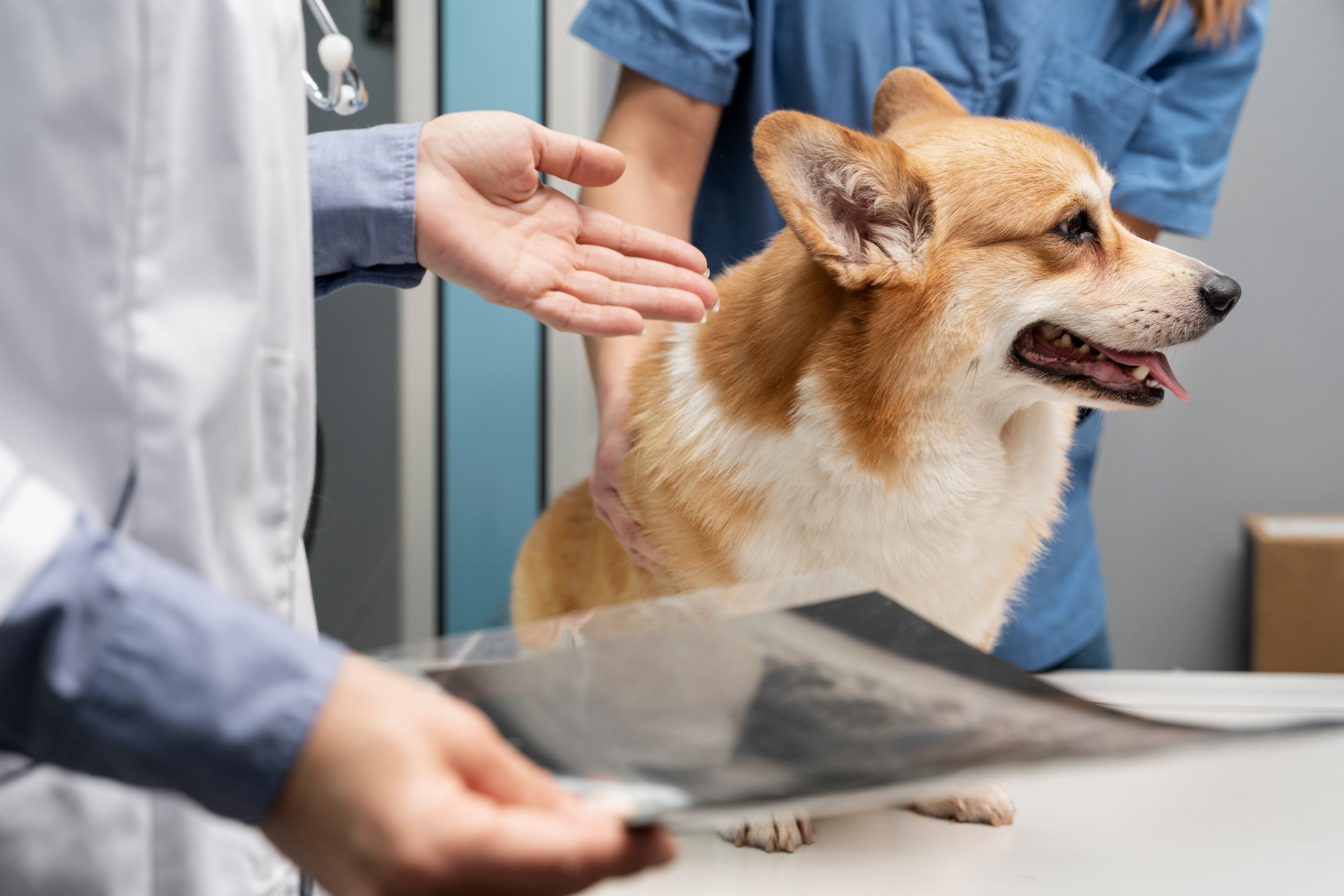
If you feel anxious about clipping your dog's nails, consider using a rotary grinder instead. These tools allow you to file down the nails manually, reducing the risk of accidentally cutting them quickly. Even if you don't know how to use a grinder, you can always learn how to grind dog nails.
Regularly inspect the nails for a black spot, which indicates proximity to the quick, and stop filing when you see it.
Rotate between nails frequently when using a grinder to prevent excessive heat buildup, which can be uncomfortable for your pup.
Pay attention to your dog's behavior as you approach the quick—most dogs will show signs of discomfort. If your pet seems uncomfortable, stop filing immediately.
Safety Tips on Cutting Black Dog Nails
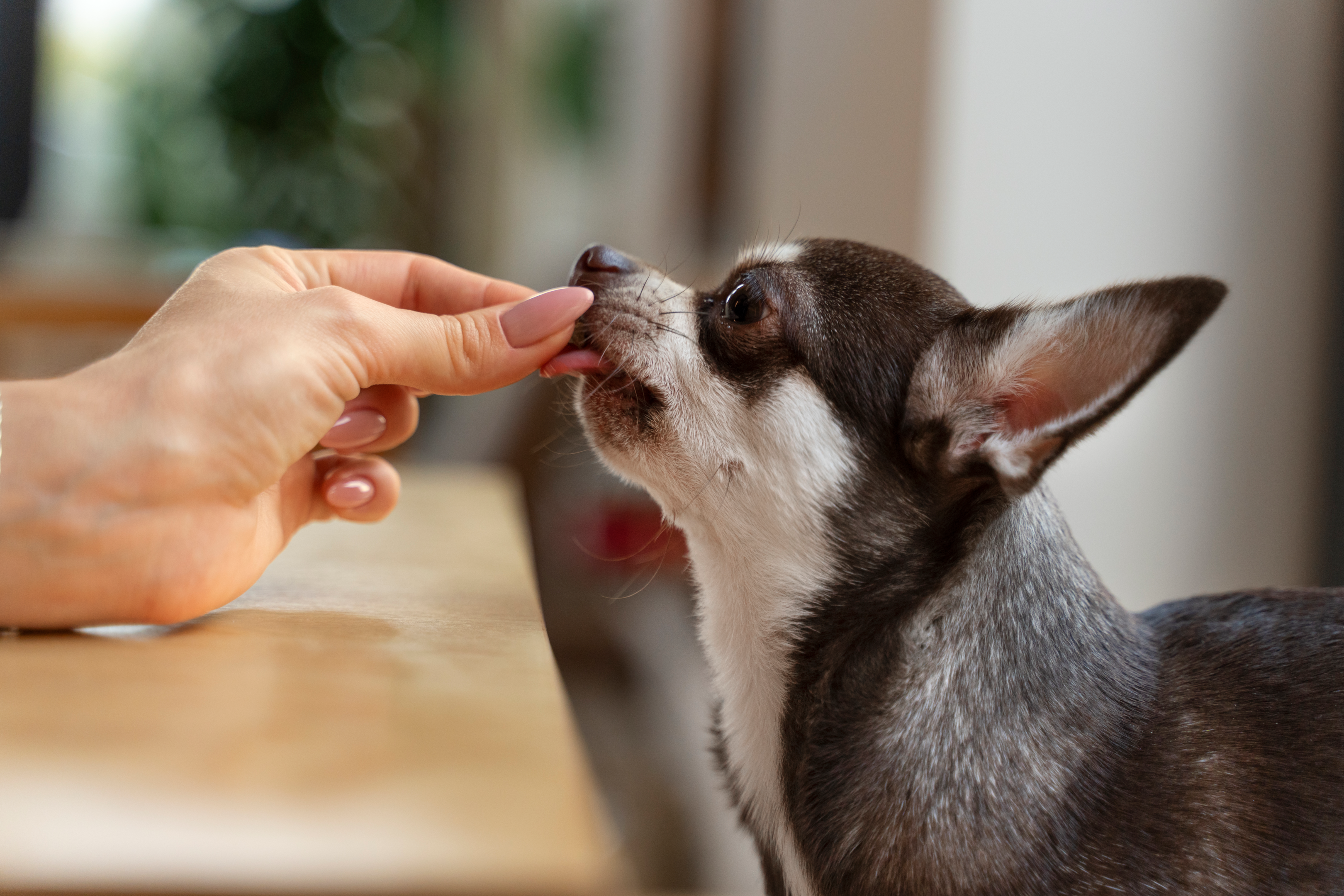
Trimming your dog's dark nails can be anxiety-inducing, but it doesn't have to be. Here are some tips to help you prepare and ensure a safe and positive experience while trimming your canine companion's nails.
- Ensure you have sharp dog nail clippers suitable for your dog's nail size. Guillotine or scissor-style clippers work well as long as they're sharp.
- Look at the underside of your dog's toenail to locate the quick, which appears as a pinkish area. Trim above this point to avoid causing pain or bleeding.
- Trim small amounts of the nail at a time to avoid cutting into the quick accidentally. Check the nail after each clip until you can see a small shiny dot, indicating proximity to the quick.
- In case you accidentally nick the quick and cause bleeding, have styptic powder or cornstarch on hand to stop the bleeding.
- If your dog is nervous or you're unsure about trimming black nails, ask a family member or friend to assist. One person can hold and comfort the dog while the other trims the long nails.
- If you're uncomfortable with clipping, consider using a nail file or grinder instead. This method allows you to gradually file down the nail without the risk of cutting the quick.
- Take short breaks during the trimming process to prevent frustration for both you and your dog.
- Pay attention to your dog's body language. If they show signs of discomfort or stress, such as pulling away or vocalizing, stop trimming immediately.
By following these safety tips, nail trims for your dog's black nails can be effective, and you can successfully minimize the risk of injury or discomfort.
Final Words
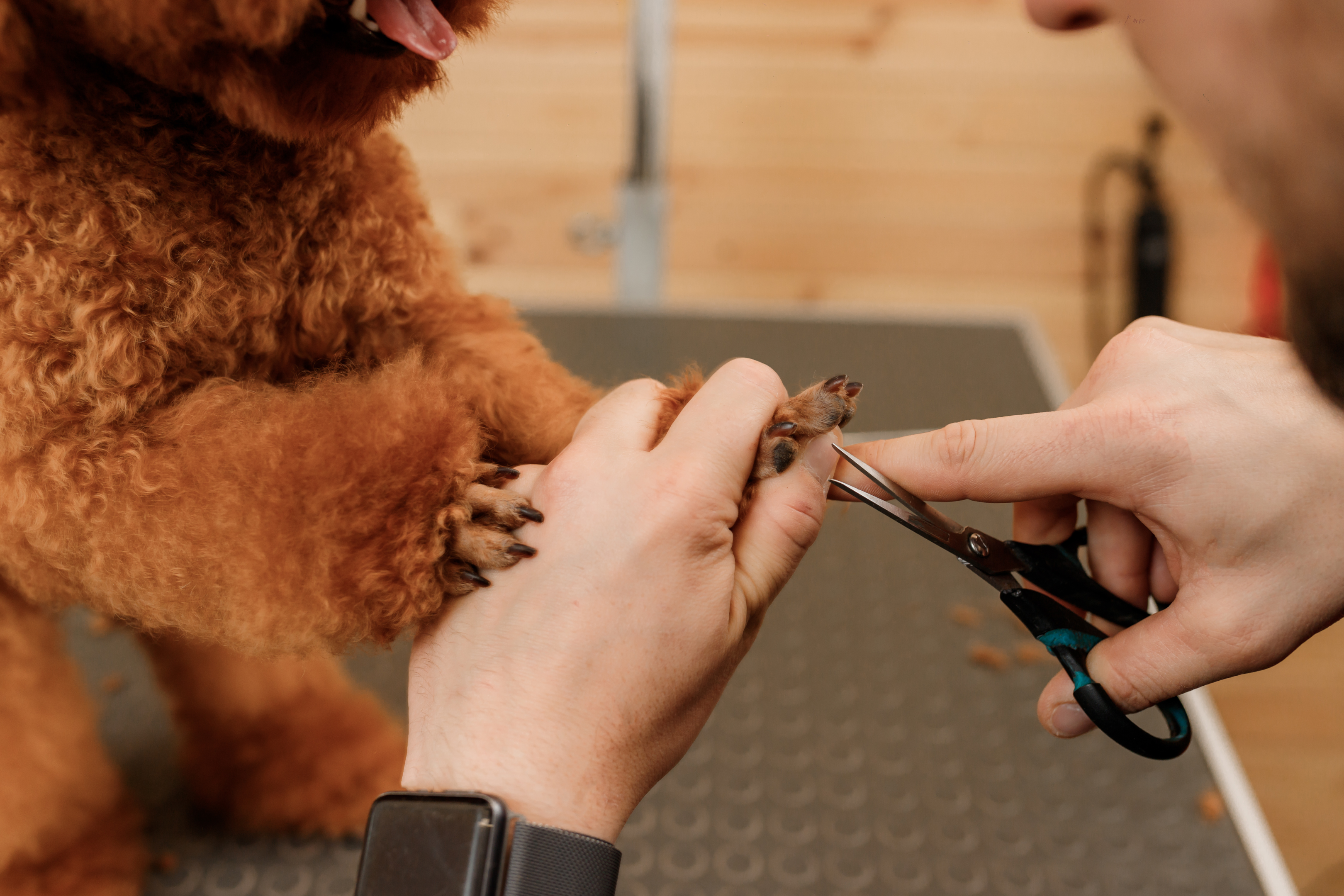
Mastering the art of safely trimming your dog's dark nails is a skill that requires patience, caution, and the right tools. With these, you can easily trim your dog's nails.
By following the safety tips outlined in this article, you can create a positive and stress-free experience for both you and your furry friend.
Remember to use sharp nail trimmers, take small cuts, and watch for signs of discomfort. Whether you choose to trim manually with dog nail trimmers or use a nail file or grinder, the key is to trim above the quick to avoid pain and bleeding.
With practice, caution, and lots of care, you can become confident in the nail trim, and you can maintain your dog's nail health while keeping the bond between you and your furry friend strong.
FAQs
What is the quick in nails?
The quick in a dog's nails is the living tissue that has the blood vessels and nerves. It appears as a pinkish area within the nail, typically visible on lighter-colored nails. On dark-colored nails, identifying the quick can be more challenging, but it's still essential to trim the nail tip above it to prevent discomfort for your pet.
What do you do if you nick the quick?
If this happens, quickly apply styptic powder to stop the bleeding. If you don't have styptic powder, corn starch or flour can be used as alternatives. Generally, minor quick nicks can be managed at home without veterinary attention. Offer your dog a lot of love, praise, and treats to reassure them.
If your dog remains calm and comfortable despite the mishap, you can proceed with safely trimming the remaining nails. However, if they show signs of nervousness or fear, it's best to halt the session for the day. You can always attempt nail trimming again the next day.
When do I get help with dog nail trimming?
Professional dog groomers are skilled at nail trimming, so you can schedule an appointment with them if trimming your dog's nails is too challenging or stressful for you. If your dog is genuinely fearful of nail trimming and could potentially harm themselves during the process, it's advisable to contact your veterinarian.




















